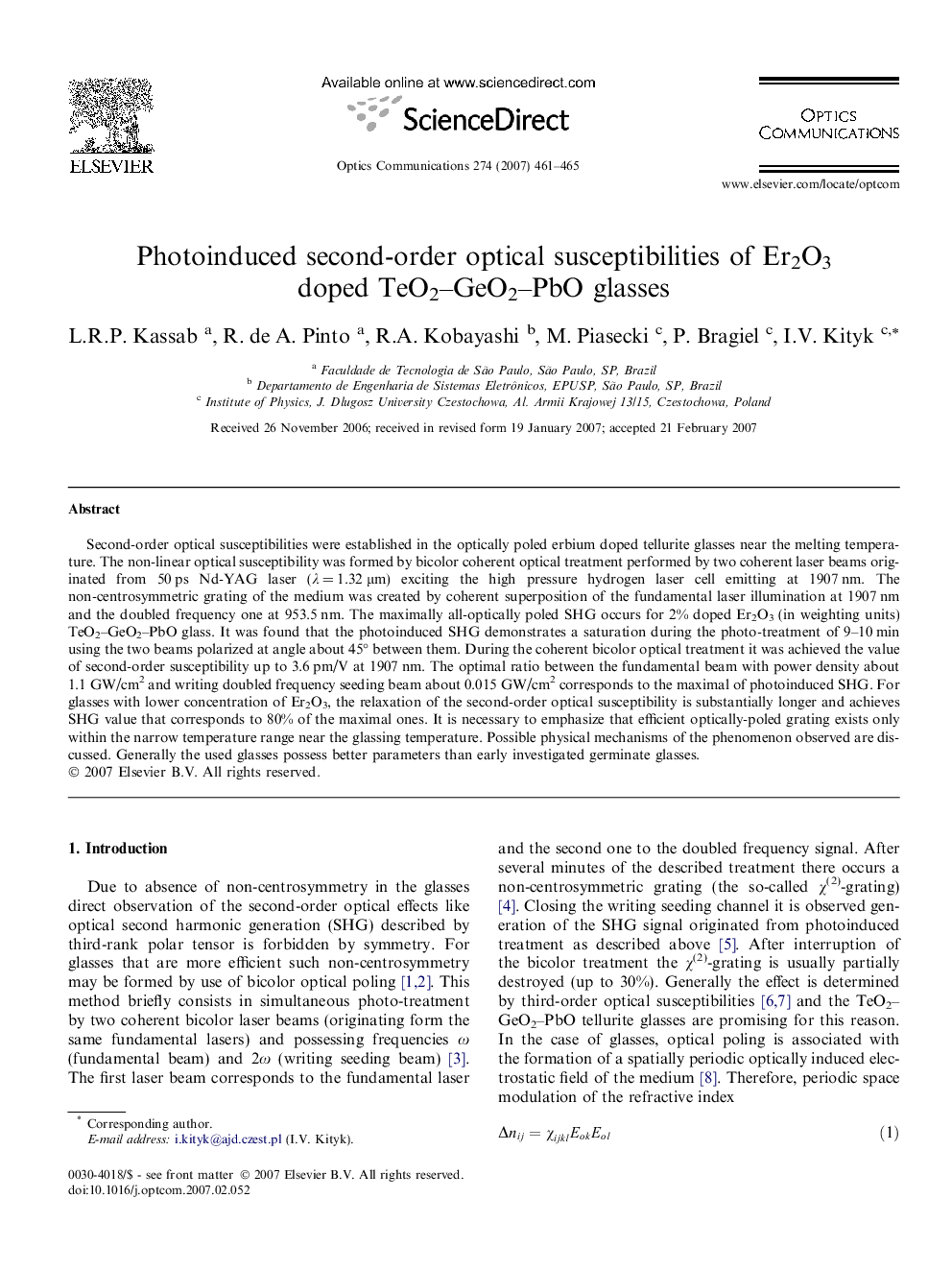| Article ID | Journal | Published Year | Pages | File Type |
|---|---|---|---|---|
| 1542133 | Optics Communications | 2007 | 5 Pages |
Abstract
Second-order optical susceptibilities were established in the optically poled erbium doped tellurite glasses near the melting temperature. The non-linear optical susceptibility was formed by bicolor coherent optical treatment performed by two coherent laser beams originated from 50 ps Nd-YAG laser (λ = 1.32 μm) exciting the high pressure hydrogen laser cell emitting at 1907 nm. The non-centrosymmetric grating of the medium was created by coherent superposition of the fundamental laser illumination at 1907 nm and the doubled frequency one at 953.5 nm. The maximally all-optically poled SHG occurs for 2% doped Er2O3 (in weighting units) TeO2-GeO2-PbO glass. It was found that the photoinduced SHG demonstrates a saturation during the photo-treatment of 9-10 min using the two beams polarized at angle about 45° between them. During the coherent bicolor optical treatment it was achieved the value of second-order susceptibility up to 3.6 pm/V at 1907 nm. The optimal ratio between the fundamental beam with power density about 1.1 GW/cm2 and writing doubled frequency seeding beam about 0.015 GW/cm2 corresponds to the maximal of photoinduced SHG. For glasses with lower concentration of Er2O3, the relaxation of the second-order optical susceptibility is substantially longer and achieves SHG value that corresponds to 80% of the maximal ones. It is necessary to emphasize that efficient optically-poled grating exists only within the narrow temperature range near the glassing temperature. Possible physical mechanisms of the phenomenon observed are discussed. Generally the used glasses possess better parameters than early investigated germinate glasses.
Related Topics
Physical Sciences and Engineering
Materials Science
Electronic, Optical and Magnetic Materials
Authors
L.R.P. Kassab, R. de A. Pinto, R.A. Kobayashi, M. Piasecki, P. Bragiel, I.V. Kityk,
